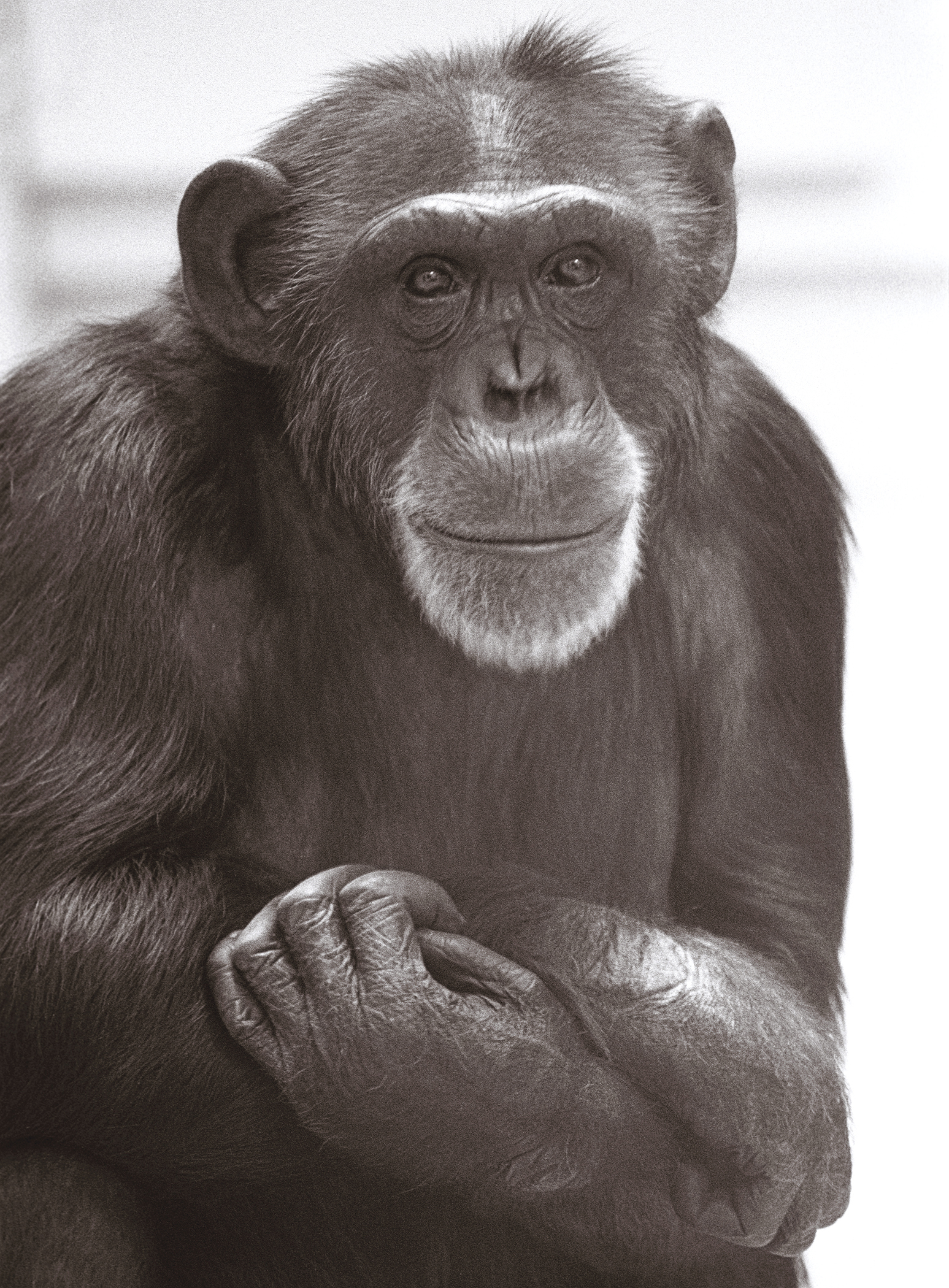Fascination with language and communication between humans and apes is never more apparent than in the story of Washoe the chimpanzee and the primates that came after her. When teaching spoken language to primates proved unsuccessful, scientists switched to American Sign Language (ASL) and taught Washoe over 250 signs.
It all started in West Africa where Washoe was born sometime around September 1965 – the exact date is unknown because Washoe was captured from the wild. According to the Friends of Washoe website, it is likely that her mother was killed and the young chimp was sold to a dealer.
Washoe was brought to the United States by the military, and married couple Dr Allen and Beatrix Gardner adopted her for their research on June 21, 1966. The Drs Gardner were cognitive researchers and raised Washoe in their back garden, repeatedly teaching her and encouraging her to use sign language in a similar manner as would have been used with a deaf child of the time. Her name comes from Washoe county, in Nevada, where she lived for five years.
“The object of our research was to learn how much chimps are like humans,” Dr Allen Gardner told Nevada Today in 2007. “To measure this accurately, chimps would need to be raised as human children and to do that, we needed to share a common language.”
Washoe became the first animal to acquire human sign language. Their research was published in the journal Science in August 1969. In 1980, former student of the Gardners Roger Founts, and his wife Deborah, took Washoe to Washington, where she became the matriarch to three other younger chimpanzees called Loulis, Tatu, and Dar, at the Chimpanzee and Human Communication Institute (CHCI) at Central Washington University in Ellensburg.

Washoe lived at the Chimpanzee and Human Communication Institute.
Image courtesy of Central Washington University
Washoe is said to have taught Loulis signs, representing the first time a primate learned sign language from another chimp instead of a human researcher. Loulis used his first sign after spending just eight days with Washoe.
“Apes that were raised as ‘cross-fostered’ , that is apes raised in human families, used their signs freely with both apes and humans. Apes that were language-trained (often raised in isolation) only signed to other humans – and usually only in response to specific questions,” said Dr Catherine Hobaiter of the University of St Andrews in a statement to British Deaf News.
Washoe’s use of sign language was not without controversy. Other scientists, including Herbert Terrace, believed that she was only mimicking the signs presented to her and did not use them spontaneously or with real understanding of the grammar of the language. Terrace taught Nim Chimpsky (the chimp) signs, but found after video analysis he was merely copying the researchers.
Other primates were taught sign language after Washoe success. Koko the gorilla reportedly learned between 350 and 1,000 words after being taught by Penny Patterson in the 70s.
Washoe died in 2007 at the age of 42, after more than 20 years at the CHCI and a lifetime of expanding our understanding of learning and language acquisition in primates.
Source Link: Chimpanzee Washoe Was The First Animal To Learn A Human Language